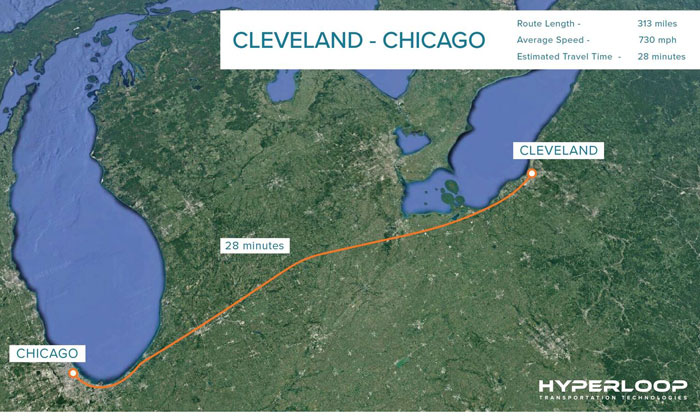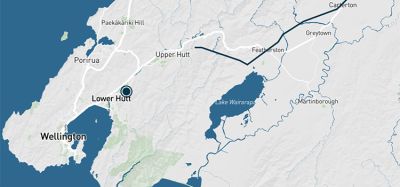Hyperloop Transportation Technologies signs first US interstate agreement
- Like
- Digg
- Del
- Tumblr
- VKontakte
- Buffer
- Love This
- Odnoklassniki
- Meneame
- Blogger
- Amazon
- Yahoo Mail
- Gmail
- AOL
- Newsvine
- HackerNews
- Evernote
- MySpace
- Mail.ru
- Viadeo
- Line
- Comments
- Yummly
- SMS
- Viber
- Telegram
- Subscribe
- Skype
- Facebook Messenger
- Kakao
- LiveJournal
- Yammer
- Edgar
- Fintel
- Mix
- Instapaper
- Copy Link
Posted: 16 February 2018 | Intelligent Transport | No comments yet
Hyperloop Transportation Technologies is set to conduct a study of feasibility into developing hyperloop routes and infrastructure between Cleveland and Chicago…


Hyperloop Transportation Technologies (HTT) has announced the signing of official agreements with the Northern Ohio Areawide Coordinating Agency (NOACA) to begin a feasibility study for the region.
Identified for study are several corridors between Cleveland and Chicago with the region supporting HTT’s Hyperloop system after Ohio’s legislature passing a resolution for the initiative in 2017.
“Regulations are the ultimate barrier for Hyperloop implementation and we are excited to build the first real public-private partnership to bring Hyperloop travel to the US,” said Dirk Ahlborn, CEO of HTT. “With this agreement, we welcome innovative and industry-leading partners in both government and industry to our movement.”
In January, HTT worked alongside a bipartisan group consisting of congressional representatives from Illinois, Ohio, Pennsylvania, and Wisconsin sent a formal letter to President Donald Trump, requesting infrastructure funding to develop the system.
“We came here because places like Cleveland, Chicago and Pittsburgh have the manufacturing, the raw materials and the talented, hardworking people in order to make it happen,” said Andrea La Mendola, Chief Global Operations Officer of HTT. “We can source everything from this area.”
HTT has formed a regional consortium around the project to include a multitude of other prominent organisations. On 26 February in Cleveland, at the Great Lakes Science Center, additional details will be revealed.
“It’s quite amazing to see how many partners Hyperloop Transportation Technology already has in the development of the Hyperloop,” said Grace Gallucci, Executive Director of NOACA. “They have partnerships with academic institutions, government institutions and the private sector.”
Related topics
Infrastructure & Urban Planning, Transport Governance & Policy
Related cities
United States of America
Related organisations
Hyperloop Transportation Technologies, NOACA
Related people
Andrea La Mendola, Dirk Ahlborn, Grace Gallucci







